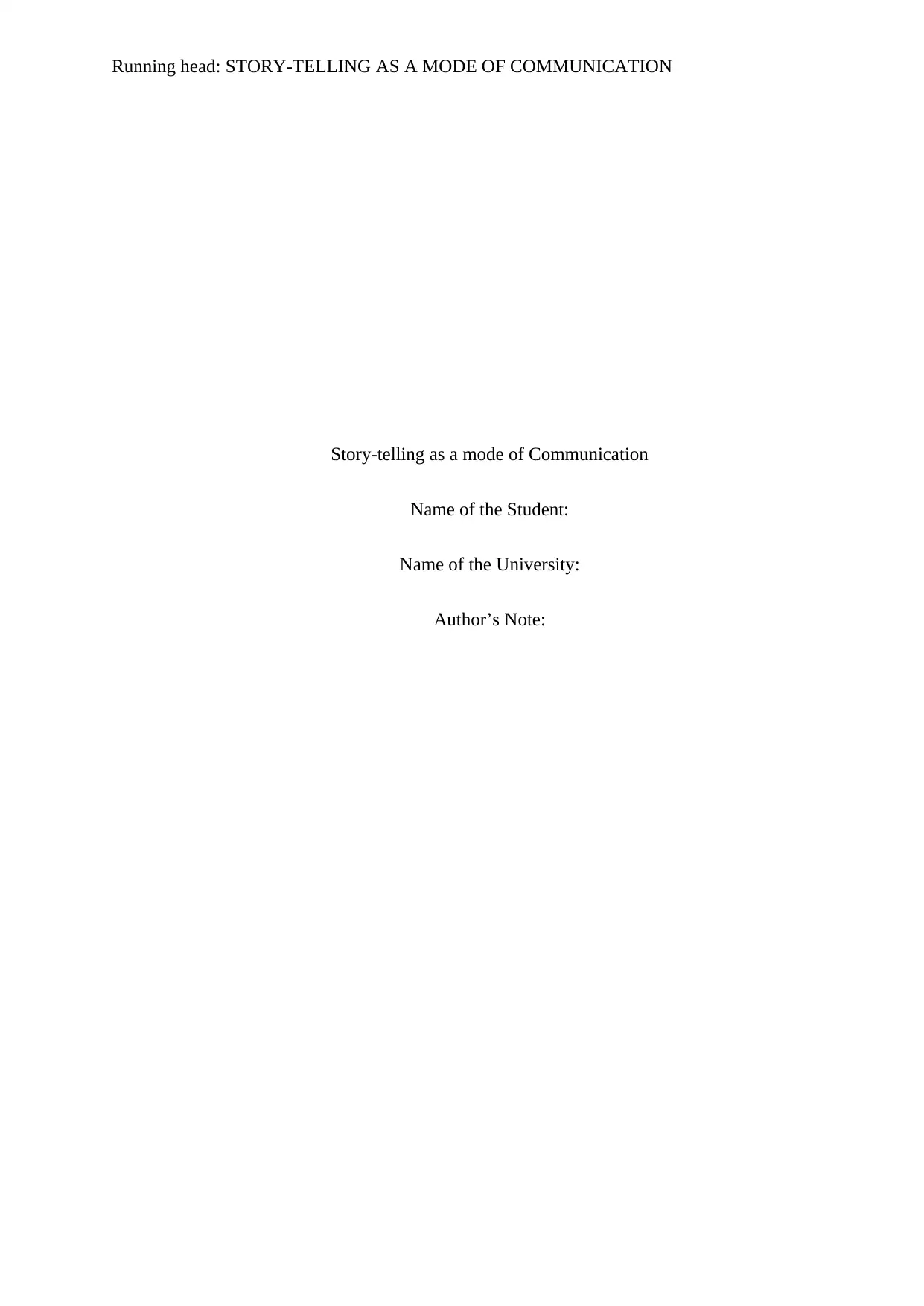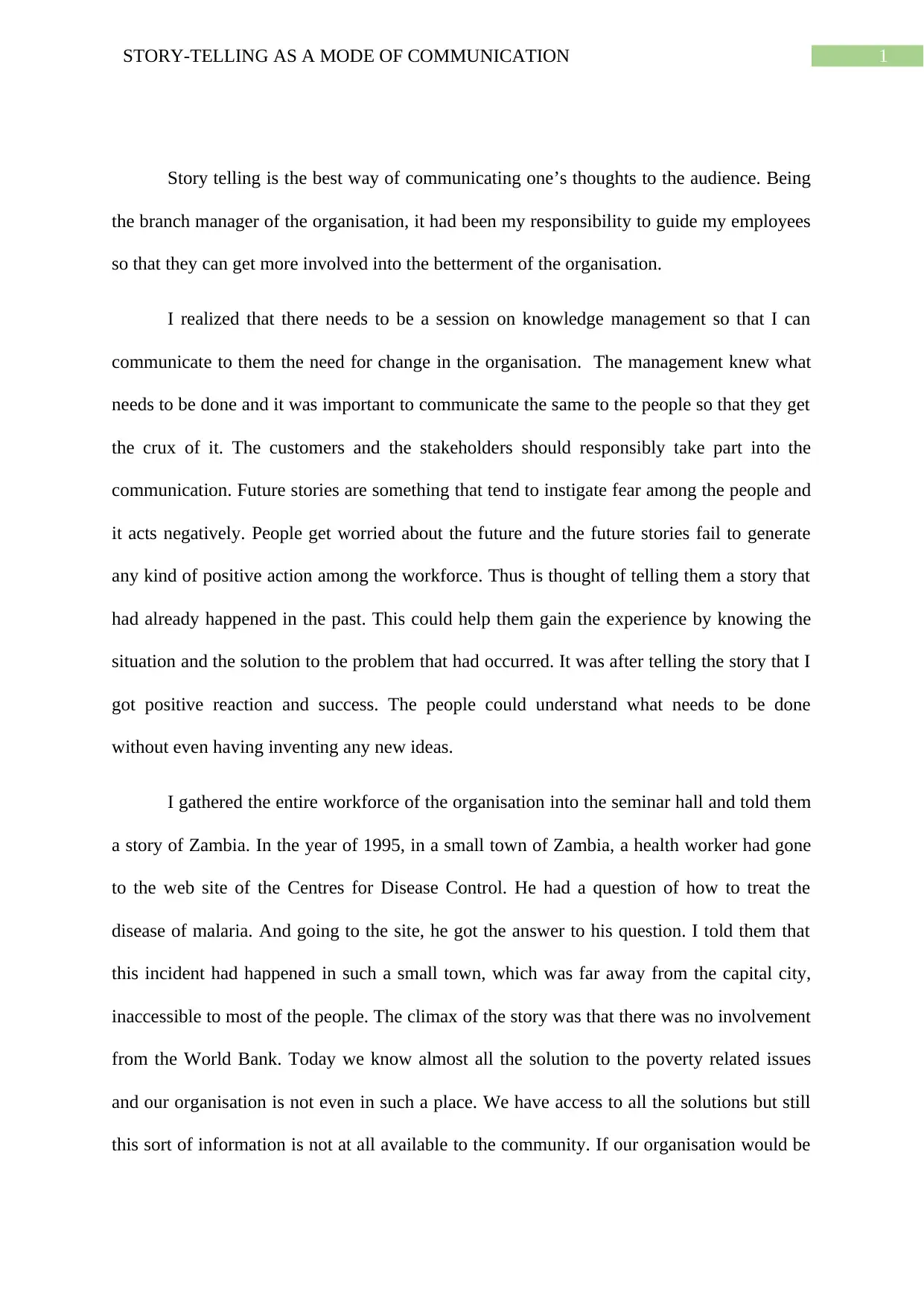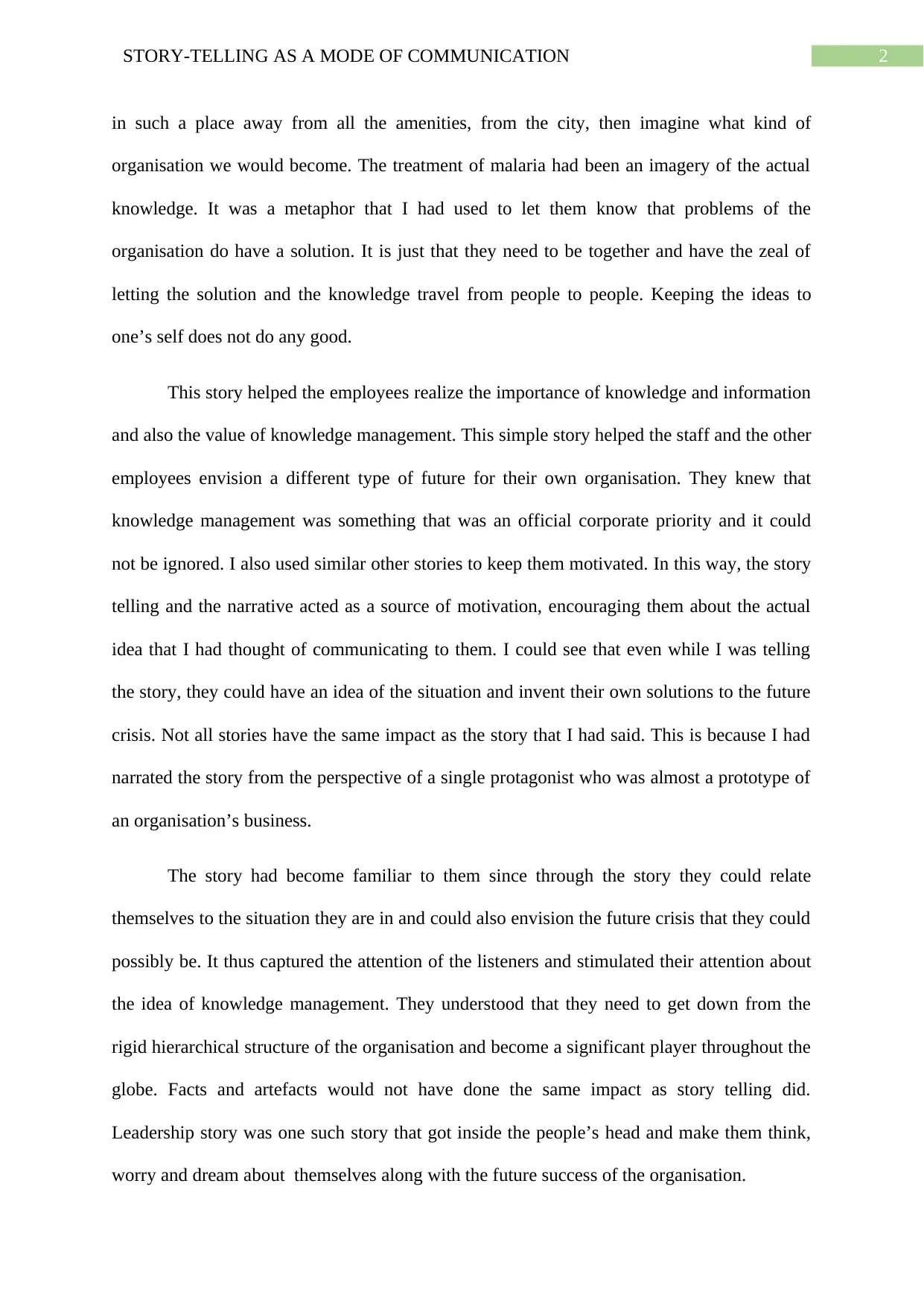Storytelling in Leadership: A Mode of Effective Communication Report
VerifiedAdded on 2022/08/18
|3
|839
|16
Report
AI Summary
This report examines the effectiveness of storytelling as a mode of communication within an organizational leadership context. The author, a branch manager, reflects on a successful instance of using a narrative to communicate the need for knowledge management and organizational change to employees. The report details the story of a health worker in Zambia who accessed information from the Centers for Disease Control, highlighting the importance of knowledge sharing and the potential for positive impact when information is disseminated effectively. The author contrasts the impact of storytelling with the limitations of presenting facts and artifacts, emphasizing how a well-crafted narrative can capture attention, stimulate critical thinking, and motivate employees to envision and contribute to a better future for the organization. The report underscores the power of relating the story to the employees, making them understand their role in the organizational structure and how to solve future crisis. The author concludes that storytelling fosters a shared understanding and encourages proactive engagement, ultimately driving organizational success.
1 out of 3










![[object Object]](/_next/static/media/star-bottom.7253800d.svg)